I am trying to adapt the approach from (ggplot2 multiple sub groups of a bar chart) but something is not as it should be. The code is:
library(grid)
MethodA= rep(c("ARIMA"), 6)
MethodB=rep(c("LSTM"), 6)
MethodC = rep(c("ARIMA-LSTM"),6)
MethodD=rep(c("SSA"),6)
Method=c(MethodA, MethodB, MethodC, MethodD)
Measure = rep(c("RMSE", "RMSE", "MAE", "MAE", "MAPE", "MAPE"), 4)
trtest=rep(c("train", "test"), 12)
Value=sample(x = 4000:7000, size = 24, replace = TRUE)
df2 <- data.frame(Method, Measure, trtest, Value)
dodge <- position_dodge(width = 0.9)
g1 <- ggplot(data = df, aes(x = interaction(Variety, Trt), y = yield, fill = factor(geno))) +
geom_bar(stat = "identity", position = position_dodge()) +
#geom_errorbar(aes(ymax = yield + SE, ymin = yield - SE), position = dodge, width = 0.2) +
coord_cartesian(ylim = c(0, 7500)) +
annotate("text", x = 1:6, y = - 10,
label = rep(c("Variety 1", "Variety 2", "Variety 3"), 2)) +
annotate("text", c(1.5, 3.5), y = - 20, label = c("Irrigated", "Dry")) +
theme_classic() +
theme(plot.margin = unit(c(1, 1, 4, 1), "lines"),
axis.title.x = element_blank(),
axis.text.x = element_blank())
# remove clipping of x axis labels
g2 <- ggplot_gtable(ggplot_build(g1))
g2$layout$clip[g2$layout$name == "panel"] <- "off"
grid.draw(g2)
The problem is aslo in a sequence that interaction function generates - the sequences are not by the order - ARIMA - RMSE, MAE, MAPE, then LSTM - RMSE, MAE, MAPE ...
I would appreciate for any help. Best, Nikola
